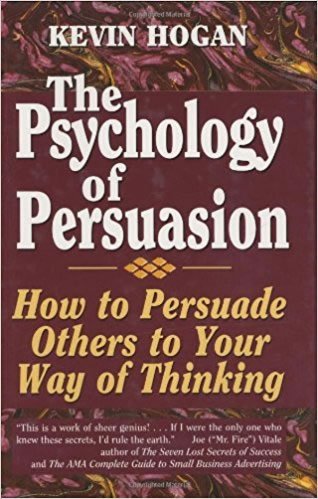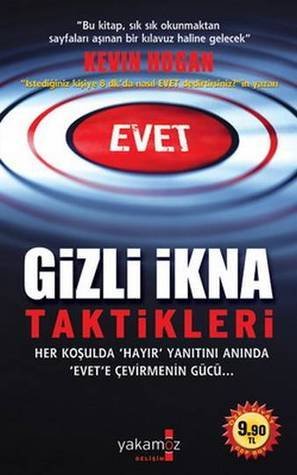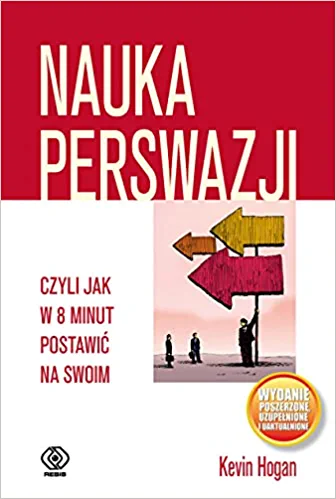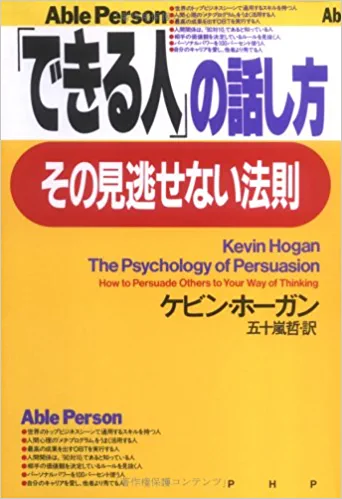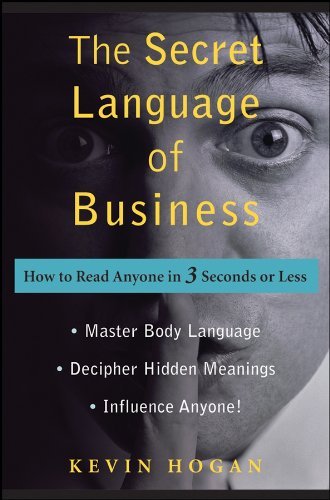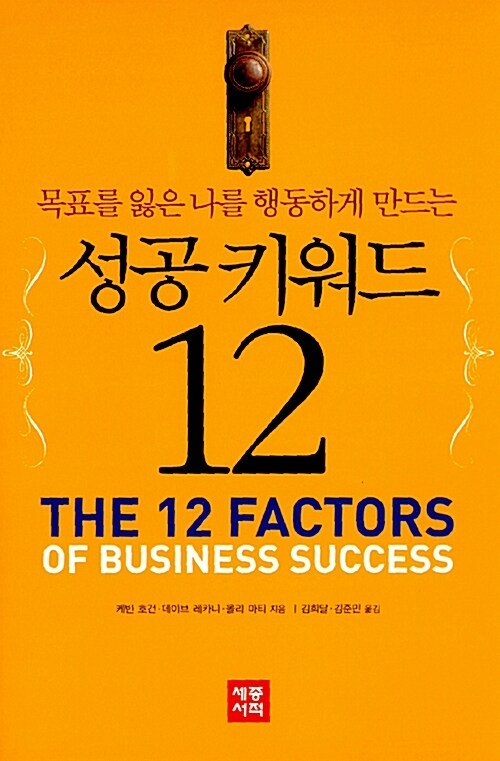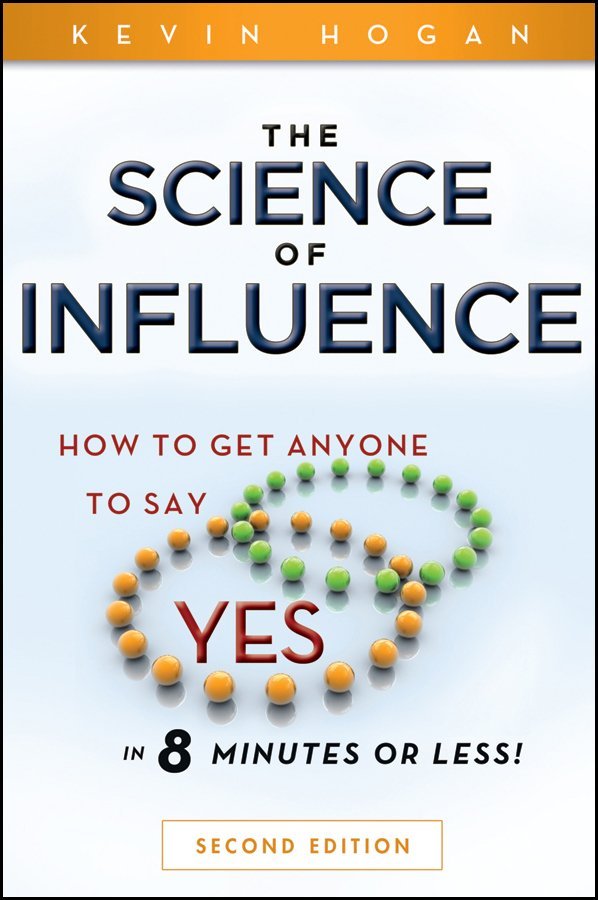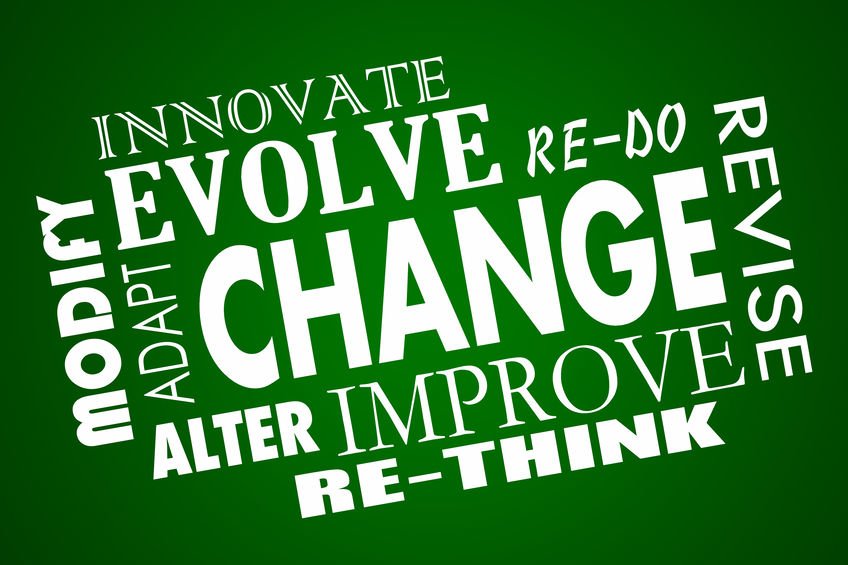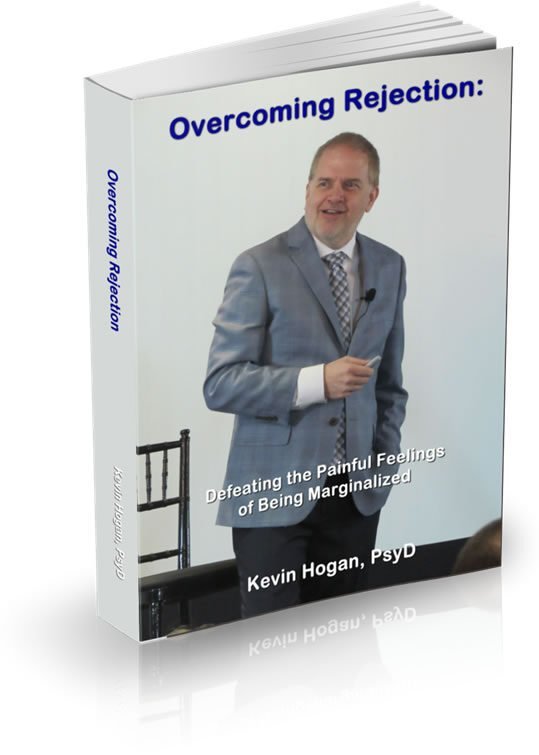The Boring Behavior Sequence that Most Often Persuades
How is it even POSSIBLE that boring people can persuade…and painfully…ya’ want to know what the answer is?
It’s an important factor for you to be aware of…and once in awhile…incorporate!
It’s an aspect of CHARISMA that keeps boring people going. (Sort of like how mother nature made babies cute so they survive the terrible twos.)
Let’s begin here:
Legend Point: Thoughts very rarely cause emotions. Typically emotions bring thoughts to consciousness.
In the world that you and I live in, behaviors cause emotions and emotions trigger thought processes.
(I used to call that a “$10,000 KEY”, …truth? …it’s worth a heckuva lot more than that IF you take time to write it down and think about it…)
Today I’ll illustrate from some simple research how all of this works so you can go forth and conquer.
OK, let’s get to it…
Agents of Influence
I worked in “straight commission” direct sales for 7 years. Different companies. And my own company later.
With 8 – 10 appointments daily, one of the things I did was, very little talking.
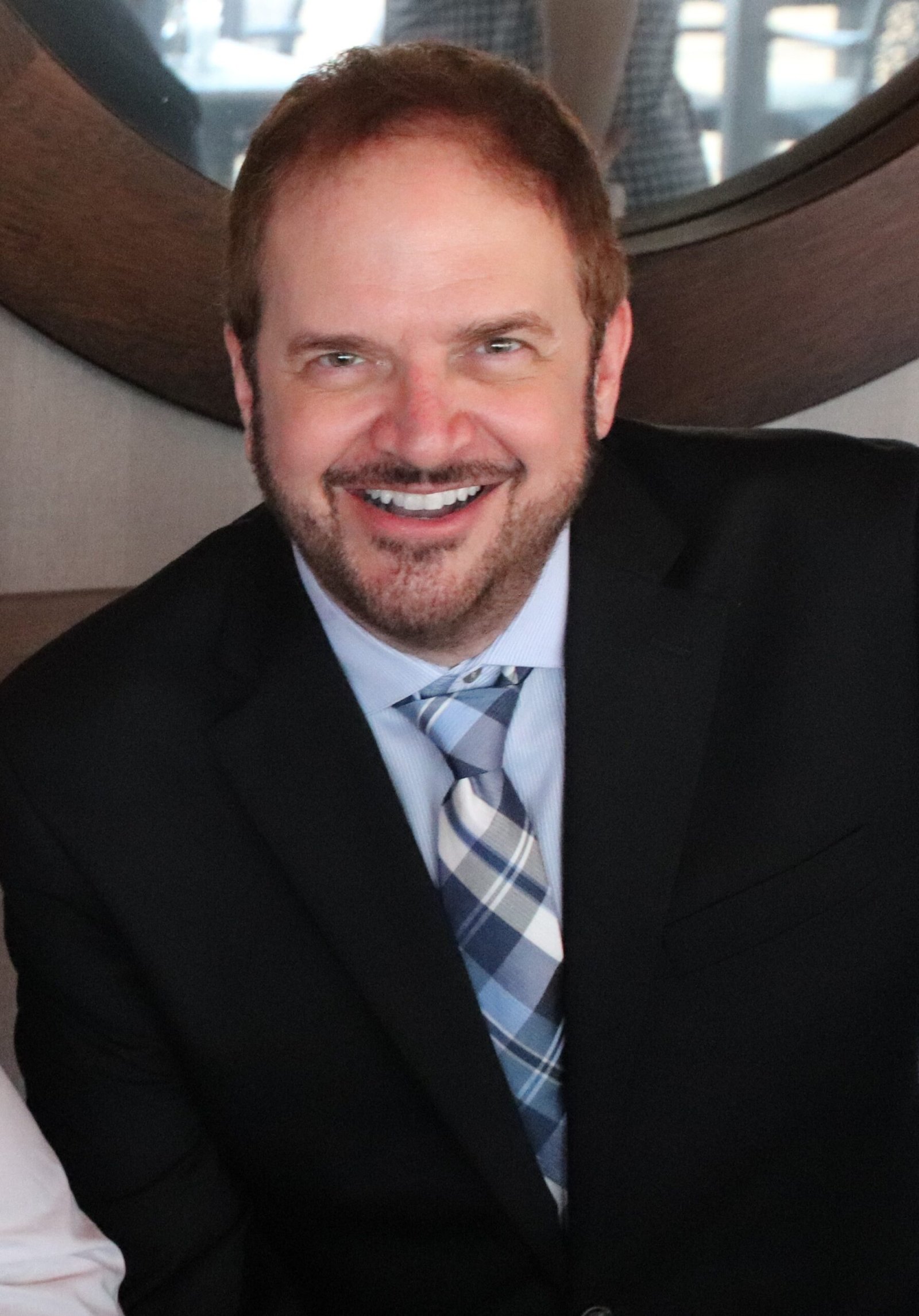
Kevin in Wroclaw, Poland 2018
Pitching: Deciding how much money you want to get today and suck it from people’s pockets.
It’s a garbage philosophy.
I was taught to “pitch” in my very first big sales job. I was taught and I ignored. I’m just not doing that. I had been selling for more than a decade before I “learned to pitch.”
I hated what I saw. Literally. It made me ill. I still don’t like “pitching.” I liked Rick Sutcliffe, Rick Reuschel, Kerry Wood, and other REAL Chicago Cubs pitchers when I was a little kid. THEY were pitchers on the baseball diamond. “Pitching” is a rather disgusting word that doesn’t belong in an influencers mindset.
Next…
I was always pretty good at “selling” which really meant I actually gave a damn about every person I worked with and I wasn’t going to suggest B if they would do better with A. Period. When I worked for the National Kidney Foundation, we (my Minneapolis Team that worked for me as fundraising manager) never asked anyone to do anything they weren’t going to be glad they did. We set RECORDS. I was supposed to have the project through mid-March, we had so many donors I all but had to stay on for another two MONTHS. I was in my 20’s but I CARED.
Early on in my “sales jobs” (insurance, life insurance, newspapers, my own various micro-businesses,…the least amount of time with a customer spent on “selling” vs. “talking” about other stuff that mattered to my clients, was what made a huge difference between my failure and success. I went on to be a sales manager, fundraising manager on several different projects and ultimately that was what I was going to do, teach and succeed with.
I think the biggest golden nugget was that I have always listened to people tell stories with GREAT attention. Stories fascinate me. One kind of story that people love to tell is their success stories.
I kept a 4 x 6, 24 pound note card on every human client I had for at least a decade. I learned this from Harvey McKay, an oldtimer who wasn’t going to trust his memory to remember what his clients kids and pets names were. I later met a few smart people who did the same.
Today consumer researchers often consider such matters boring.
But…
I’d ask almost all the business owners I met with, “How did you go from basically nothing to having a successful business?”
Now the fact is not everyone came from nothing, but a lot of people in business that were my customers were indeed from humble backgrounds. Entrepreneurs. I LOVED entrepreneurs. I learned more from them than anyone on the planet.
If a police officer’s filter of the world is seeing a lot of bad guys in the world, mine was wanting to meet a lot of people who had the kind of success I wanted to achieve, who start with as little as I had by actually WORKING FOR their clients and customers.
The education I got while I was “selling” was remarkable. In a 45 minute appointment, I spoke very little. I asked a lot of questions.
I would ask people about everything from where they spent their vacation to the kinds of fish they caught to the profit margins they made on the gasoline they sold. As they became comfortable with me, they’d tell me stories about the spouse and the kids though I never asked about family. I discovered that family relationships dramatically influenced the effectiveness of he managers, CEO’s and owners I would talk with. That was a BIG AHA.
Instead of repeating the same message every single appointment, I asked tons of questions and listened. I had a choice. I could talk about what I didn’t know or I could LEARN VOLUMES from people who were doing what I wanted to be great at.
I was fascinated. Business owners and managers told me pretty much all the secrets of their respective businesses. I learned precisely what projects I might want to take on as I developed resources. I also learned that most of the stuff that people were doing, regardless of revenue, was not something that would hold my attention for any of a dozen reasons.
…and then I would ask for the sale…
 If the total time with a client was say 45 minutes, 30 was invested in listening to the customer tell me about their businesses and their success and family stories. Then I spent five minutes telling a story or two about who I was and my life background. and the final 5 minutes, transacting business.
If the total time with a client was say 45 minutes, 30 was invested in listening to the customer tell me about their businesses and their success and family stories. Then I spent five minutes telling a story or two about who I was and my life background. and the final 5 minutes, transacting business.
Right before the holidays one of my best clients (a hero of mine actually) for a decade, Tom Butler, dropped me a message on Facebook and I was thrilled. I invited him over for an hour (everyone gets an hour) and he stayed for 3 1/2. We talked about Fantasy Football we played together for six years. (I had not thought of it in 2 decades.) And my visits to his house, where I met a U.S. Senator and coached him on body language….and yeah… 3 more hours after that. That’s how important some people remain in your mind and most others don’t. I felt honored.
What I never did was babble on endlessly or ask a bunch of stupid questions. I did pretty well in general. I was still young and learning. It turns out I could have and I might have done just as well…or even better. Check this out:
Questions that babble into a “yes?!” Research from around the world all in 100 words. Turn the page…
Want to Know What Gets Them to Say “Yes?”
In a press release, Authors Bob M. Fennis (Utrecht University, the Netherlands), Loes Janssen (University of Twente, the Netherlands), and Kathleen D. Vohs (University of Minnesota) [and Vohs is one of my favorite reads. In marketing and social psych …there just aren’t any better]…found that…
The researchers have concluded that questions that seem like polite chitchat actually soften you up for “a pitch.” And this strategy even succeeds at increasing donations.
 (A lot of people STILL use the word “pitch” for a proposal or offer. It bugs me but I bug them in other ways.)
(A lot of people STILL use the word “pitch” for a proposal or offer. It bugs me but I bug them in other ways.)
The next time a telemarketer opens with a friendly question, you might stop and wonder why.
A study in the Journal of Consumer Research shows that it is surprisingly effective when salespeople or fundraisers ask how your day has been or which football team you support before broaching the subject of a purchase or donation.
“Across six field and lab studies we found that influence agents’ initial questions deplete the self-control resources that are needed to resist an unwanted influence attempt,” write the authors.
(I had NEVER thought of this. And it is a rather massive aha.)
“This state of reduced self-control renders consumers vulnerable to the persuasion ploys foisted upon them by influence agents, thereby resulting in increased willingness to acquiesce to the agent.”
The researchers broke down the process into two stages. The first is the initial question, or series of questions, that softens up (researchers words, not mine) the listener and gets him or her to essentially yield to the request.
The first step takes away some of the resources we might normally use to control our spending and refuse the request.
The second stage is when the actual appeal is made. In a state weakened by answering questions, we end up giving more, the authors explain.
So when a telemarketer asks “How are you today?” consumers can be considerately skeptical of what is coming next.
Key Point: “The initial act of answering seemingly harmless questions is enough to produce a state of mindlessness which increases the odds of complying with a larger target request,” the authors conclude.
[I didn’t say that, the researchers did, but I want to give you more of what they say in the details…]
Turn the page
[Bob M. Fennis, Loes Janssen, and Kathleen D. Vohs. Acts of Benevolence: A Limited? Resource Account of Compliance with Charitable Requests. Journal of Consumer Research, DOI: 10.1086/593291]
Getting to yes isn’t as hard as you think…
But after reading the reports on extensive research, I confess to being a bit irritated. I’ve never thought of “softening up” a prospect. Ever. I’ve never made a “pitch” in my life, though I’ve thrown plenty from 60′ 6″….that said I do find the academic researchers work here, of immense value.
Risky Decisions

Today people feel like every decision they make is a risk.
And risk aversion is not necessarily a foolish frame.
But…because most people are paralyzed by risk, they become more likely to put off doing business with you today.
There’s a lot of times this makes sense. There’s a lot of times this doesn’t. After all, every communication is a persuasive communication.
Meaningless babble and questions?
An interesting study was done at the University of Haifa to see just what kinds of stuff might influence decisions and decision makers…stuff that hadn’t been looked at before.
In this study, Dr. Doron Kliger (and his student Dalia Gilad) discovered that even accountants and investment advisers are influenced by meaningless information.
(Yeah, you should write that down, on paper and keep it stuck on the wall.)
Example? The A and A (accountants and advisers) were more likely to rate a traded stock AFTER reading a story on successful risk taking decisions.

“Priming, the underlying psychological mechanism, is well-known in psychology, but to date was not analyzed with regard to financial decision making the way we did,” says Kliger in a recent press release.
The study subjects were divided into two groups. One group was given a story on a person who took risks and consequently made big profits.
The second group read a story on someone who refused to take such risks and managed, by doing so, to avoid great losses.
Both groups were given the story in the context of testing their memory abilities. They had no idea what was really being studied was the rating they would give a stock, for example.
After reading the story, the participants were given financial reports of a NASDAQ-traded stock whose name was not revealed.
The reports included short financial reports and a graph presenting the stock’s past performance. The financial information given to the two groups was identical, *the only difference being the stories on risk-taking decisions that preceded it.*
After reading the stories, the participants were asked questions regarding the traded stock.
Key Point: Results of the study have shown that the group that read on risk taking that succeeded attributed a higher value to the stock investment than the second group!
“The findings of this research show that risk preferences may be manipulated – while the person making those decisions is unaware of it.
An investment advisor who reads reports in the morning news that ‘encourage’ risk taking, might behave entirely differently, on a professional level, than if reading reports on failed risk taking – even if the reports were unrelated to the question at stake.
If you’re reading this you are way ahead of the curve, so yep…this is next and you will likely be a bit surprised.
Turn the page…

“Psychology describes varying human behavior depending on numerous factors. It should not be assumed that financial decision makers are immune to such influences,” Dr. Kliger pointed out.
Hint!: If you are hoping to encourage people to do business with you, you probably should spare the disaster stories.
What should you do?!
Pay close attention…
In another experiment, yielding similar results, the priming information was given as verbal inserts attached to ads that accompanied the financial information.
In this setup, the experimental group received verbal comments advocating risk-seeking behavior, while the control group received the same ads, but with neutral verbal comments.
The risk-advocating (comments) inserts were, for example, “Do you have the courage, vision, daring, to get to the top?”, and “Adventurousness, daring, vision, are the materials success is made of”.
The corresponding risk-neutral inserts: “Come invest with us” and “Coordination and timing is everything.”
Priming influences everyone a lot more than we once believed.
What is Priming?
Priming is a known psychological phenomenon, influencing memory retrieval processes by exposure to different stimuli.
Dr. Kliger explains priming: “Consider, for example, a situation where you have returned home after watching a horror movie. While climbing the stairs, you hear the garden gate creaking. A common fear under such circumstances might be that there is a burglar outside.
Hearing the same sound after returning from a tedious workday at the office, if noticing it at all, one would probably interpret it in a banal way – ‘Woops, forgot the cat outside again’. In this example, the horror movie is the priming substance, affecting subsequent behavior.”
The fact that priming takes a role in decision making manifests the existence of two systems: a rational, cognitive one, and a subconscious, ‘gut feeling’,” Dr. Kliger added.
Who’s in Charge Here?
These processes play parallel roles in the modern information jungle, as they probably did tens of thousands years ago, Dr. Kliger explains.
The much faster, subconscious system takes charge whenever there is a need to make fast decisions, such as deciding whether to attack or to run away when confronted with a wild animal – or whether to buy or sell your investment portfolio when something irregular happens, such as a market crash.
The lesson?
Key Point: Whatever happens immediately before you engage in what you THINK is the beginning of the persuasion process will influence the ultimate determination.
[University of Haifa. Reading Reports Involving Risk-taking Affects Financial Decision Making. www.haifa.ac.il ]
So what do you want the person you are talking to, to be primed… to do…feel…think….?
Decision Point: The Right Decision, Every Time

Discover a System of Decision Making That Will Clear the Way to Success
Begins May 24, 2024
If you’ve ever taken one of my Course Intensives, yes, it’s like them!
The Decision Point Course lasts 7 weeks and has more than 20 modules. You set your own schedule – you don’t have to be “in class” at any particular time each day. You get VIP access to a secret members-only section of the KevinHogan.com site and can log in at any time.
Registration today for the course that begins this week allows you to save $700 off the $1,995 price to the public.
If you could point to one word, to one factor, to one element or cause of what happens to you in your life, it is decision.
Maybe you have been experiencing one or more of the following:
Moving is always tough but when there are more than one person’s job or one person going to a school that they love and the possibility of leaving friends behind makes for what many consider an impossible decision. What do YOU decide? How do you decide?
Your investments have done OK but your total income saved for your future is terrible. There are a lot of options you’ve been told about but you really don’t know what to do. What will you decide? How will you decide?
You are a manager at your company and only have enough budget to pursue one product line. You can choose between an almost sure thing with a very modest return or a riskier proposal that could make you a superstar. What do you decide? How do you make the decision?
You’re on your way home for the holidays. You get stuck in bad weather and are put up at a local hotel. In the bar that night a beautiful woman strikes up a conversation with you and she has offered you the key to her room. What will you decide?
A relative lives with you. They take advantage of you but you can’t let them go because you don’t know what will happen to them. What is the right thing to do and will that thing be what you decide? How will you decide?
An elderly relative lives with you. They can’t take care of themselves anymore. You hate the idea of a nursing home or “worse.” You also want “a life.” What will you decide to do?
Your wife is two months pregnant. A test reveals the baby is going to be born with a disease that will require your 24/7 care for the rest of your life. She decides she wants to keep the baby. But you haven’t made your decision. What will you decide to do? How will you make the decision?
Your home has a horrible defect that you can cover easily in the selling process and the defect almost certainly won’t be discovered for years. Revealing it will reduce the price of your home $100,000. What will you decide to do? How will you decide?
You can stay at your present job which you really don’t like that much and live on a predictable but very modest income or you can pursue a venture that has about a 70% chance of success and if it succeeds, you would double your income. What do you decide to do? How do you decide?
You’ve been thinking of getting a divorce but you’re just not sure. There are other fish in the sea but you wonder if you can still compete? Can you do better? What about the kids? What do you DECIDE? How do you decide?
You are involved in a custody battle for your children. One of the kids is misbehaving terribly and you don’t know whether you should spank them or discipline them firmly. The result could easily affect the results of the custody hearing. What do you do? How do you decide?
Two women have taken a liking to you. You date them both for some time. They both begin to talk about moving in and a permanent relationship. One is the kind of person you feel comfortable with and would be easy to love. The other is 10 years younger and is celebrity beautiful. Unfortunately, she knows it and enjoys being the center of attention. What do you decide? How do you decide?
And those are just a few of the decisions that face real people every day. Decisions that people are forced into and have no idea what to do or how to do it.

THIS COURSE shows you how to make ALL of the decisions above.
And it’s important to note, that the right decision easily can be different from person to person. Knowing how to evaluate THAT is crucial to everything you will do…but no one ever does it….
If you haven’t taken a Course Intensive with me: this is not like other online courses you’ve taken. With me, a Course Intensive means you will have instruction in several media forms. Video, audio, and text. There is NO specific time you must meet with me every day, but you will have special VIP email access to me throughout the course. And you will have access to the members’ only discussion group.
About 50% of the people who take my courses collect all the materials and work at their own pace later. The other half work with me and sometimes with other participants when necessary, on projects that are necessary to learn how to make the RIGHT DECISIONS.

My Course Intensives are universally known to be challenging, results-oriented, pragmatic and show you EXACTLY how to get where you want to go.
It’s the Decision Point
Decision making is a function of thinking that almost 90% of people do very poorly. Most people think that if something turns out well, they made a good decision. If something turns out poorly they made a bad decision.
And that conditioning is one of the biggest reasons why people are poor decision makers.
Decision making is first and foremost about MAKING DECISIONS IN THE FIRST PLACE.
Every day, people vacillate on making changes in their lives that they KNOW are absolutely necessary, but they decide to do nothing and hope for the best, only to live a life where nothing ever changes.
This is where we begin.
Elimination of PROCRASTINATION and VACILLATION.
You will learn how to recognize situations where you are about to commit acts of self-sabotage. I’ll show you how to identify it long before it becomes an issue. I’ll show you how to crush self-sabotage so you can make a CHOICE instead of only having the ability to stay with the Status Quo.
This first week’s module alone will be worth the investment in the course.
How would you like to NEVER procrastinate again?
What would happen if you could actually MOVE in the DIRECTION that you want to, even if it is ONLY AWAY FROM WHERE YOU ARE TODAY?!
By the end of week one, you will have daily projects to do for several weeks that will almost literally beat the habits of self-sabotage and procrastination from your life.
Most people don’t know that procrastination is a habit you picked up, but it is NOT your fault.
The same is true of self-sabotage.
I will explain why, where it all started, why it happens to everyone and why it must be eradicated intentionally and with no little effort. By the END of the course, IF YOU FOLLOW the Decision Point Plan, you will have eliminated procrastination and almost all forms of self-sabotage.
I’ll explain in detail why self-sabotage is a little trickier and lurks in EVERYONE’S backyard waiting to strike. I’ll show you how to get rid of it and then prevent it so you never have to deal with it in the future.

And that is only week one! How we doin’ so far?!
Decision IS Destiny
You make decisions all the time. Generally speaking, the more decisions a person makes, the more successful they are.
The better a person is at making decisions, the more successful they are.
When you move from your old home to the home you are in now; maybe you moved because you wanted a bigger house, or to put the kids in a better school district. Maybe it was just closer to where your job is…more convenient.
And of course, in the case of uprooting and moving your family, you’re talking about a lot of variables, a lot of things to consider. You’re going to find out how to make the right decision in which house to buy and where to move.
What about leaving your job for some other opportunity?
FEAR enters the picture quite clearly and because the future is seemingly unpredictable, you feel frozen or stuck as to what to do, so you immediately default to stay in your same job. But there is a way to make this decision much easier. And you’ll be pleasantly surprised when you do….
But there are also the smaller decisions of life.
- Which movie to go see…
- Which show to watch on TV….
- What to make for dinner…
- Whether to go to the game or stay home….
- Whether to take a vacation with or without the kids…
- Whether to wear blue or black…
There is a simple method that takes little thinking at all to make these day to day decisions.
And then there are decisions that you make that influence other people’s lives like taking a new job, going into business for yourself, moving to a new area, having a surgery that has risks involved….
How do you know what to do? Don’t worry, most people haven’t got a clue as to how to make the right decision every time, and there is a right decision to make.

Then there are Destiny Decisions…those decisions that you make that will literally determine where you are going to be in three years or five years.
These are REALLY IMPORTANT decisions. Every day I see people screwing them up as if they are no big deal.
You’ll find out a methodical system that might take a very short amount of time or significantly longer, depending on circumstances. Nevertheless, you will find out exactly what to do every time.
Obviously, there are plenty of Black Swan’s (unexpected random events like hurricanes and terrorism) out there to get in the way of what you want in life, but nothing you can control impacts your life more than a decision).
Write that down.
Put it on the refrigerator.
That alone is worth $10,000, yes?
Nothing you can control impacts your life more than a decision.
How would life be different if you knew you were going to make the right decision, every time?
(Every time?!)
Did you know that in life, there is almost always the best decision?
What would happen if you had the method for decision making?
What would it be worth to have a simple systematic approach to decision making where the guidelines are from your head and heart?
Most people are paralyzed with uncertainty about whether they should:
- Ask the girl to marry them.
- Make a purchase.
- Move from one place to another…
- Quit their job…
- Decide between committing one person or another.
- Start a business…
- Ask the girl to go out with them…
- Send the letter or not…
- Decide between hiring one person or another.
- Get a divorce…
- Send your kids to public or private school…
- Choose from a new car, a used car, or no car…
- Go back to school to get more education…
- Fire the person or not.
- Invest in stocks, bonds, real estate and not screw up.
- Accurately plan for their future in all areas.
Why Do People Make Bad Decisions?
And…they make bad decisions because…we all have about 8-10 areas of failure in our brain….similar experiences where you make the wrong decisions over and over again.
(Like marrying the same guy five times, dating jerks, working for idiots, saying the wrong thing at the worst time, etc. Sound familiar?)
We’ll repair all of that. (If we don’t, life will be the same tomorrow as it has been in the past….)
Did you know there is a proven way to make the right decision in each of the above choices?
Now STOP.
For the sake of discussion, let’s assume that is correct. There IS a method you can use to make the RIGHT decision just about every time.
It doesn’t take a genius to think, “I decide to make more money,” “lose weight,” “get a better job,” “get married to perfect person x”.
KEY: Learning the process of making the right decision involves making that decision STICK, be UNYIELDING and barring a Black Swan, guaranteeing you will follow through.
Over the last 15 years, we’ve been fortunate to have studied the raw information about how to make laser beam accurate decisions. Complex software programs have shown scientists how to simplify the decision making process using some mostly simple (sorry, it’s not ALL instantly easy!) rules.
And now, you don’t need the software or the computer anymore…
And, by the way, in the last 15 years, there has been an incredible amount of research done about decision making that teaches and uses VERY FAULTY processes, that can’t and don’t work.
KEY: You’ll experience FIRST HAND, how what seems to be an obvious decision, is almost always the wrong one….the costly one…(often the disaster one….)
If you follow that teacher’s advice, you’ll flat out screw up.
You’ll end up with next to nothing and headaches and heartaches to boot.
Why?
People get emotional.

People are lazy.
They don’t do the research.
They don’t test.
Why should they?
They get paid the same no matter what and when YOU screw up, they just say, “you did it wrong.”
Play along for just a moment.
Can I ask you a question?
Have you ever read that it’s been proven that 93% of all communication is body language?
Of course, lots of times. Everyone has read that.
And of course, it’s not true.
(It’s not even close to accurate.)
How could that be, it’s common knowledge…isn’t it?
There was one study done by a brilliant communication researcher 35 years ago that evaluated people saying one word to another, with the other person only being able to see the person from the neck UP. (that leaves about 90% of the body out of the study.) In this one specific instance, Dr. Mehrabian found that about 93% of the communication sent was at a nonverbal level. Obviously when people communicate with more than one word and people can see below the neck, all kinds of factors change the percentages.
Problem is people read something in a book written by Goofball X and they believe what she writes because she says it’s “scientific.”
People look at their lives and think, “I did everything I was told…”
Yep and look at that life. It didn’t work.
The guru didn’t do the research. They went with the party line and taught that.
I don’t care about the party line because I don’t like the people at the party.
Remember when Benjamin Franklin did his famous experiment about testing each of the virtues (temperance and so forth) for a month so he could eventually become adept at all of them? I’ve heard most motivational speakers talk or write about this. I’d name them, but it would take an entire page…
Anyway…You remember… but he gave up the idea after the first week …he never did the experiment. He wrote early in his biography that he was going to do the project and then soon after decided not to. Basically, he said it was impossible to do such a thing.
I’ve never heard ANYONE get that right, either.
But THEY TEACH YOU TO DO IT…
And because you trust them YOU TRY IT and FAIL.
Franklin’s personal challenge didn’t work for all kinds of reasons I’ll show you later.
Question: Why did you believe he actually did the project?
Only one reason: …because someone you trusted or believed, an author, a teacher….told you that it was true.
Want a quick way to filter a crummy guru out?
If they tell you that story, they didn’t get very far in Franklin’s biography. If they tell you that, they’d tell you anything.
By the way…what did Franklin do instead?!
I’ll show you that at Decision Point, too.
The point is that MOST of the stuff people tell you to do…. that is “scientific,” that is based on laws of the universe or proven techniques is nothing more than their imagination having run wild.
…and following their advice will get you the same ultimate destination, every time…
Back to Start. (If you don’t go into foreclosure first.)
So why don’t the vast majority of people make good decisions?

Why are people AFRAID to make decisions at all?
They’ve been given crummy information and worse methods for how to choose and what to do.
It’s that simple.
(OK, there are eight other core reasons people make crummy decisions every day, but to pick on your neighbor here is so not cool…)
And what does the Power of Decision Point give you in life?
- Choice
- Personal freedom
- No limits
- The Ability to Succeed When Most Others Fail
- The Ability to Make Big Changes in Life with Ease and…
- Wealth if You Want It
- A LOT Better Life If You USE The Power of Decision
- Success when you use The Power of Decision.
You’re going to learn it ALL in this 7 Week E-Course.
If you’ve been in an E-Course with me, you know that although they are always convenient, they are also densely packed with practical, real life application as the end result. That is the same here. Everything you learn will be immediately applied to a crucial part of your life because there is a LOT going on in your life right now and a LOT of it has to change but you don’t know WHAT.
Each week you’ll receive a number of emails or documents from me. You’ll have homework assignments that are all real-life based…your life. You’ll be given audio’s to listen to or video to watch. You will once again, find out what “over delivery” means!
You’re going to discover:
- How People Decide
- Why Most People Make Almost All Bad Decisions
- How to KNOW What to do…
- The Four Factors of Luck and How to Tilt the “Luck Factor” in YOUR Favor.
- How to Beat the Black Swan when Bad Luck Strikes…
- All of the Successful Strategies for Decision Including Decision Point: MY PERSONAL SYSTEM
Do you sell something for a living?
[Pay attention: I’m going to show you how to analyze how your client WILL DECIDE on buying your product or service…and I’ll show you WHAT is going to happen next…think that might be worth $10,000?!]
I’ve never given the system for DECISION POINT to anyone.
I’m not going to write about it in Coffee….ever.
But the time is now to experience a truly transformational experience in an exciting and unique E-course.
I PROMISE YOU:
No one else is going to ever show you this information. You’ll never experience these experiences with anyone else. You can’t find anything remotely similar “out there.”
So essentially, you’re stuck spending seven weeks with me. As with all of my Course Intensives, I am your PERSONAL COACH and you don’t have to be at any specific place at any specific time. The program is delivered via audio, video, and text.
So what’s going to happen in these seven fascinating weeks?
I’ll personally show you the problems you face when you make decisions.
You’ll find out the impact of other people on your decision.
I’ll show you how to minimize the NEGATIVE impact of other people on your decisions, including the people you might love or work with every day.
You won’t regret your decisions anymore.

You’ll understand how to MINIMIZE RISK and MAXIMIZE RETURN on both business and personal decisions.
I’ll show you EXACTLY what to do when the RIGHT decision you determine, FEELS completely wrong.
Finding out how your beliefs, faith, values and lifestyle factor into your decisions matters a lot to you. No one else shows you how to be true to yourself and others around you while you decide for your Self or for many.
Almost forgot…
At the end of the course, you will have one cool, big Coffee Table-Sized Manual that you will be able to refer to forever.
Your tuition: $1,995 but save $700 with this last minute chance to get in today!
A couple things before you apply!
- I reserve the right to reject any application for any reason.
- There may be a few group projects that are necessary for making decisions where two people are involved, instead of just you (as in a marriage, with kids, or at work). If you are unwilling to e-mail one of your fellow participants during these two projects do not apply.
- Everything is yours to keep, but you may not share or give away any of this information to anyone.
- If you’re still here with me, then I look forward to seeing your application!
$1,995 but save $700 today by getting your application in under the wire.!


